First World War Project
Cornelius William TAYLOR (of Teynham)
b. 1891 - Teynham, Kent; Faversham Explosion |
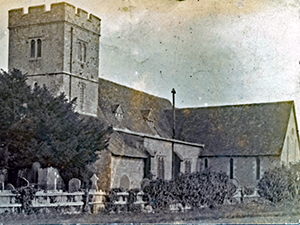
The exact location of his interment is not now known.
- A family headstone exists for his elder brother, Archibald Taylor with his wife Adelaide -
The extended Taylor family generations tell a fascinating story because they provide 'touchstones' for the growth and decline of our most significant local industries. The parents of Cornelius, William and Adelaide (who raised 13 surviving children out of 16 born), started out from Bapchild and Eastling respectively. But with the severe decline in local agricultural employment over many decades with farming innovation and mechanization, it was natural for William and Adelaide (and many in their generation) to move their family to find work. This pressure led them to Conyer/Teynham, which sat at the heart of a thriving cement and brick industry alongside the Swale arterial creeks and the new railway, which opened access to new industry and opportunities. The railway's arrival also sounded the death-knell for the once thriving coach and van trade between Dover and London (damaging the economies of Greenstreet and Sittingbourne).
Sadly, it appears that Cornelius's grandfather, also William, ended his days in the Faversham workhouse, a pauper at the age of 61 (1861). William's eldest daughter, Mary (unmarried and 40 years old), had for many years been his "house keeper" (1851 Census entry) and was also found in the Faversham Workhouse at that date (1861). It is not unusual to see daughters given this role in census returns. The Faversham workhouse concentrated Poor Law relief to replace the widely spread, smaller, workhouses in surrounding villages - for example, the Lynsted workhouse had been situated in Bumpit, which still stands in Bumpit Lane to the east of Lynsted Lane. The landowners of these smaller parishes had for many years complained about the burden of supporting paupers, so they worked together to enlarge workhouses outside their parishes.
With the development of the London to Dover railway in the mid-1850's, William (father of Cornelius) and his elder brother, James (Cornelius's uncle), moved from being local "agricultural labourers" in 1851 to find work on the emerging railways in Kent. By 1861, William and James are registered as "railway labourers", living in "The Greyhound", Sutton At Hone, immediately north of Farningham Station. "The Greyhound" still stands today.
By the age of 55 (1891), William is working on the railways as a "plate layer", raising his large family with Adelaide in Conyer. Plate layers were the general labourers who maintained the 'iron road'. By 1891, William's oldest son (John Sills Taylor) was also working on the railways as an engine stoker. By this time the railways were well established and the commercial centre of Greenstreet saw a reduction in coaching and a deterioration in the road between London and Dover. At the same time, Conyer had evolved as a major centre for brickmaking and cement production supported by its own light railway system.
By the age of 75, William (Cornelius's father) had changed his employment, firstly, to become a labourer in the Conyer cement works (1901) and then to become a farm labourer (1911). This was perhaps a job that better suited a man of his age. In the meantime, the 20 year old Cornelius William Taylor (born 1901) was a brick-maker in Conyer. From that job, he later found himself working at the Gun Cotton Works in Uplees, the scene of the horrific and tragic fire and explosion that took plan on 2nd April 1916.
Why he was not recruited into one of the Forces, like two of his brothers (Archibald Augustus and Frederick, both of whom survived) is not recorded. One possible explanation for the path followed by Cornelius may be the emerging practice to employ men in essential war industries who were not fit enough for military service? This allowed fitter men in those industries to be released to fight. This begs the question, did Cornelius not meet the criteria of fitness or stature for enlistment - was he weakened by earlier illness? too short? too slight? Defective eyesight?
Our correspondence with the Taylor family researcher included a valuable snippet: "I discovered this lovely little memorial card for Cornelius which shows that he was married after all."
Further research confirms Cornelius's marriage in the third quarter 1913 (July-August-September) to Hilda Elizabeth Kemsley registered in Faversham - you will have to register (free) with familysearch.org to view this record.
In the 1901 Census: Hilda E Kemsley can be found in Greenstreet (Lynsted-side) living with her mother in Wilkin's Cottages. Hilda was then aged 8; born in the third quarter of 1892 in Poplar, London). That would make her about 19 years old when she married Cornelius.
She had a younger brother, George E (born c.1895) and sister, Alice L (born c.1897). Her mother, Eliza, is registered as married (so her husband, Thomas William Kemsley b.1867 – brickfield labourer, was absent during the 1901 census for some unknown reason).
Lodging with Eliza's family in 1901 was a nephew, William Smith (aged 22 and a brickfield labourer).
In 1911, Eliza has left home leaving brother George E (aged 16 – "office boy"), sisters Alice L and Lilly all living in Greenstreet, Lynsted. Hilda E Kemsley is now a general domestic servant in the household of Arthur and Laura Ada Ducker. Mr Ducker is a Licensed Victualler of the Freemason's Tavern, 13-14 St. Margaret's Street, Canterbury. In earlier years, this tavern included a music hall!
"You don't know where his grave is at the church do you? The only gravestone I have ever known of is that of my grand-parents (A.A. Taylor and Alberta Taylor)." We have visited St Mary's Church and are unable to identify Cornelius's burial plot. It may be that Hilda, so newly married and without other sources of income, was unable to afford a durable marker?
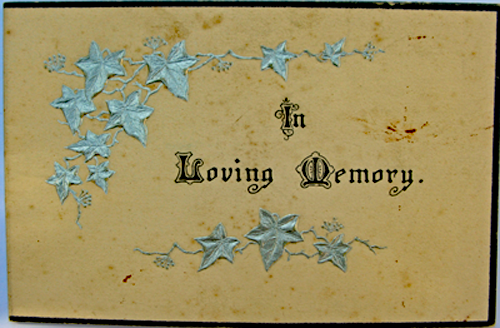
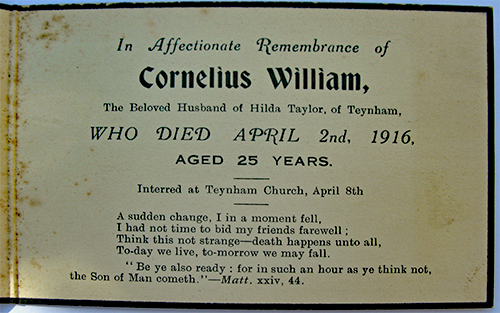
We have been very fortunate in making contact with a family researcher who has personal papers and photographs from this period that we can share here....
William Taylor WW1 veteran - son of John Sills TaylorWilliam Taylor (eldest son of John Sills Taylor). John married twice but both wives died and the family had a hard time. His oldest son, William, went to fight in the trenches and returned safely. He can be seen in the front row of the group picture in front of the 'nameless' pub [below]. William (Bill) is pictured [right] with his family after the war. He is also pictured in the "Just off the Swale" book by Don Sattin (page 79 next to his uncle Fred). |
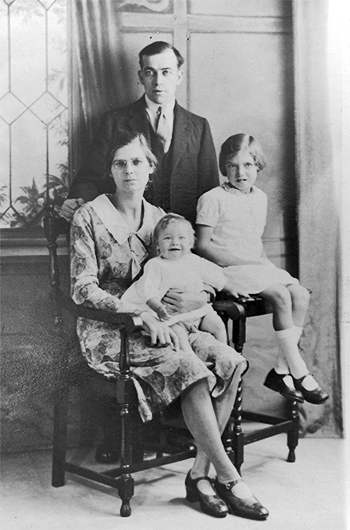 |
Archibald Augustus Taylor - brother of Cornelius His Probate records (6th March 1959) show: "TAYLOR Archibald Augustus of "The Firs", Conyer, Teynham near Sittingbourne Kent died 22 December 1958. Administration London 6 March to Alberta Taylor widow. Effects £486 14s. 1d." Our family correspondent tells us:- "The photograph (right) shows my grandfather in Uniform with his wife and daughter (both called Alberta). His daughter was born in 1913. We know he was still in Conyer in November 1915 because of the postcard his brother Fred sent to him from Dover just before he went over to France. I think he might have gone even later than that because mum wrote on the back of Cornelius's memorial card that her father had also been working at Oare at the time but missed the explosion because he was on nights. Presumably, he went after this which makes dating the group picture [below] even harder! I agree with you that it is hard to imagine them all being home on leave at the same time. Could it have been taken when they all returned safely (although that also seems unlikely)? |
|
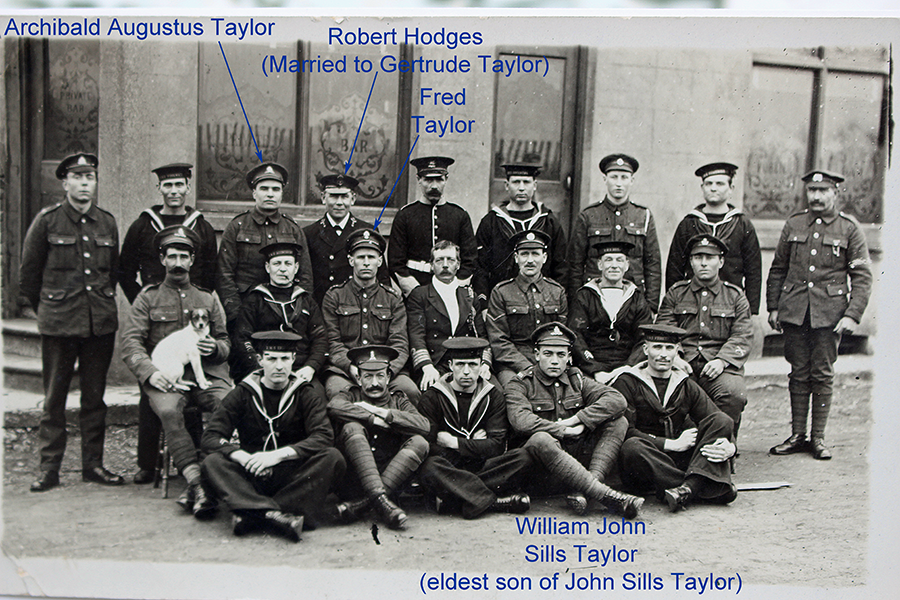
Granddad was at Ypres and told his son about seeing the centre of the town reduced to rubble. We have 2 cards he sent back to his wife and one of these has Ypres written onto the front of it. He also returned with 2 match box stands made from shell cases and bullets and 4 decorated shell cases (2 German and 2 British).
Artefacts associated with Archibald Taylor
Trench Art
|
Christmas Card
|
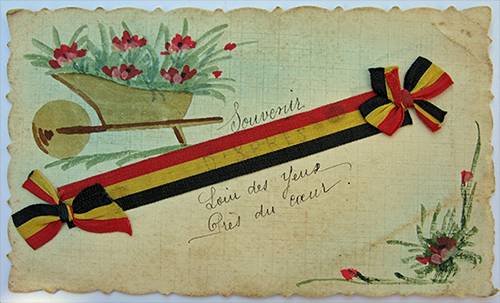 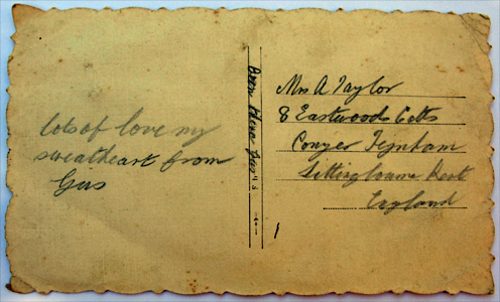 |
Frederick Taylor
In the 1911 census, Frederick was still living in the family home, working on the brickfields as a "brick setter".
Fred served in the Fusiliers and is third from the left in the top row of the group photograph [above]. The postcard [below] was sent by him to his brother Archibald the day before he left Dover.
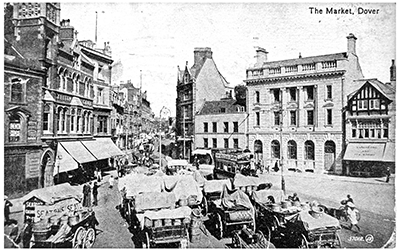 |
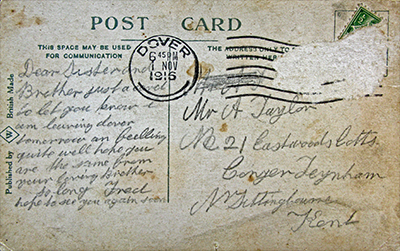 |
 |
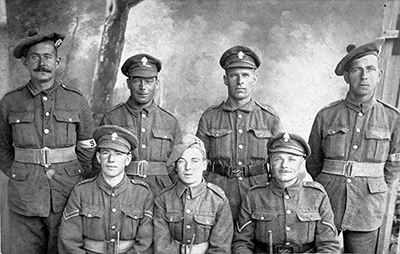 |
Taylor sisters Gertrude and Winifred
The family researcher tells us:
"Gertrude Rebecca Taylor (1881-1954) and her sister Winifred Amelia Taylor (1882-1935) married men who I believe were brothers. Winifred married Edward Edwin Hodges in 1904 and Gertrude married Robert Hodges in 1907. The sisters were both working as servants in Croydon in 1901. In the 1911 census Robert is away from home in the navy.
The first photograph [below] shows Gertrude and Robert, who is no longer in uniform. [That probably places the photograph after 1922]. The only picture of him in uniform is the group shot outside the pub.
The second picture shows Winifred Amelia (née Taylor) and Edward Hodges presumably before he set off to war. I think he could be on the pub picture as the man at the back on the right."
With so many Hodges in this part of Kent, it requires careful scrutiny of census returns to confirm that Cornelius's sisters, Gertrude and Winifred did indeed marry brothers Robert Edward and Edward Edwin Hodges respectively. These two men were born to shepherd Edward Hodges and his wife Ellen M. - both Sheppey born. Edward and Ellen first set up their marital home (1881 Census) in 2 Groves Farm Cottages, Eastchurch, Sheppey. Thereafter they and their growing family moved (1891) to Motney Hill, Rainham, in an isolated area to the north of Rainham. By this time, their family included Mabel E. (14), Robert Edward (9), Edward Edwin (7), Ellen M.A.E. (5), and Milly M. (2). By 1901, Edward and Ellen lived with their family at Banks Farm, Teynham. Edward is a Wagoners Mate on Farm, Robert has moved away, leaving Ellen (15), Millie (12), Frederick (9) and Herbert J.G. (6). Finally, the 1911 census shows Edward, Ellen and Gordon [probably "Herbert J. Gordon in the 1901 census] living in Elverton Cottages, Stone, near Faversham.
(a) Gertrude Rebecca Taylor's story
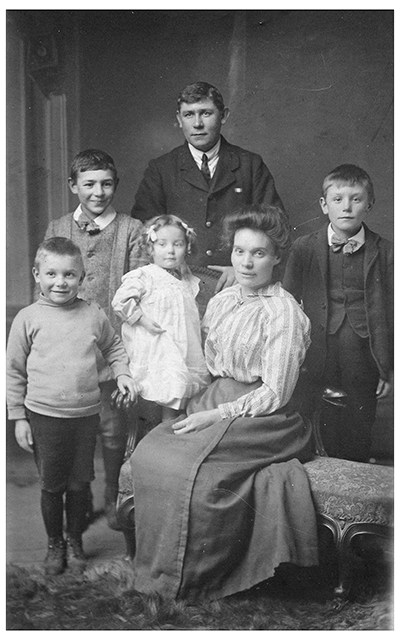 In the second quarter of 1907, Gertrude Rebecca Taylor (b.Conyer, christened 2nd October 1881) married Robert Edward Hodges (b. Sheerness, Isle of Sheppey, christened 23rd September 1882). In early adulthood, Robert was a general labourer who went on to joined the Navy on 14th January 1903 where he stayed until demobilisation on 18th July 1922.
In the second quarter of 1907, Gertrude Rebecca Taylor (b.Conyer, christened 2nd October 1881) married Robert Edward Hodges (b. Sheerness, Isle of Sheppey, christened 23rd September 1882). In early adulthood, Robert was a general labourer who went on to joined the Navy on 14th January 1903 where he stayed until demobilisation on 18th July 1922.
Roberts service record shows:
He was five feet, six and a half inches tall, brown haired, blue eyed, with a fresh complexion.
He served as Stoker, 2nd Class, HMS Pembroke (Chatham) before sailing on HMS "Clio" (1905-6) as a Stoker. He moved on to the "Argonaut" until 1907 before returning to land (HMS Pembroke I), when he married Gertrude, before he returned to sea in 1908. He then served on "Edgar" and "Warrior" before returning to Chatham (HMS Pembroke II) in 1908 when he had risen to Leading Stoker. Before returning again to land, he served on "Dwarf" (1909). He continued in this pattern, achieving the rank of Stoker Petty Officer. For the period 1903 to 1913 his character was assessed as VG and VG*, which explains in part his success.
As war approached, Robert Hodges served on HMS Acteon, joining her in 1913 until on which ship he served as Acting Chief Stoker (from November 1917) before returning to Chatham (Pembroke II) on 1st February 1918. From Chatham, he served short stints on HMS Wallington.
At the close of war, on 1st November, Robert was confirmed Chief Stoker and remained on land until 30th December 1919 when he joined HMS "Ajax", the "Emperor of India" until returning to port for the final time on 15th March 1922.
1911 Census:-
Gertrude Hodges (born Conyer), wife, 29 years, married 4 years, two children. Living in No.11 Conyer, Teynham. Robert E. Hodges (3) (Born Borstal, Kent); Frederick S Hodges (1) (Born Conyer).
Also staying at No.11 Conyer: Gertrude and Cornelius's sister, Florence Lavinia A. Glayzer. Registered as a "visitor" (38), she was married in 1904 to William Charles Glayzer who is at another address in 1911. In 1901 he is shown as born in Folkestone and boarding in Croydon, working as a fishmonger. In 1891, when living with his parents in Folkestone, he and his father were working as porters.
Adelaide Glayzer. dau.(3) (born in Tunbridge Wells); William Glayzer. son (2) (born in Tunbridge Wells); Edward Glayzer. son (11 months) (born in Tunbridge Wells).
(b) Winifred Amelia Taylor's Story
When Winifred Amelia Taylor (1882-1935) married Edward Edwin Hodges, he had been a Wagoner (Banks Farm, Teynham) but by 1911 he is shown as a Market Gardener on Nicholls Farm, Deerton Street, with two children Nellie Matilda Winifred (4) and Edward (2). Sadly, records for this man are amongst those lost to bombing in the Second World War. During the 1914-18 War, it appears that Edward Edwin Taylor served as a driver in the Royal Artillery (Royal Horse Artillery and Royal Field Artillery) where he served with RFA Regimental Numbers 720264 and 177702. He was awarded the Victory Medal and British War Medal. |
|
Post War in Conyer
 After the war, Archibald Augustus Taylor worked in the brickfields working his way up to the post of fore man (which came with the house). In 1926 he was a Special Constable during the General Strike and during WW2 he was in the Home Guard working on the marshes.
After the war, Archibald Augustus Taylor worked in the brickfields working his way up to the post of fore man (which came with the house). In 1926 he was a Special Constable during the General Strike and during WW2 he was in the Home Guard working on the marshes.
It is incredible how industrialised Conyer was. I found this letter which might interest you simply because it is from Eastwoods who identify themselves as cement manufacturers. The letter was to my grand father giving him the right to continue to live in the Eastwood owned house.
When he died my grandmother received another letter from them allowing her to live there for her life time.
"We agree that you shall be permitted to occupy the above premises rent and rates free during your lifetime. You will, of course, continue to be liable for the payment of all other outgoings such as gas, electricity, etc."
After she died the house was found to be unsafe and was demolished.
Extreme Weather: 1953 Floods in Conyer around "The Firs"
To bring the story even further up-to-date, family photos from 1953 show the Taylor household and Conyer Creek that suffered so badly during the evening of 31st January and 1st February 1953. A retrospective report from the Meteorological Office in 2013 explained - "Exceptional weather conditions, coupled with an inability to warn people, meant that whole communities were unaware of the imminent threat from the devastating storm surge that saw many low lying areas of East Anglia and the Thames Estuary suffer severe flooding."
"By midnight, Felixstowe, Harwich and Maldon had been flooded, with much loss of life. Soon after midnight, the sea walls on Canvey Island collapsed and 58 people died. At Jaywick in Clacton, the sea rose a metre in 15 minutes and 35 people drowned.
The surge travelled on. From Tilbury to London's docklands, oil refineries, factories, cement works, gasworks and electricity generating stations were flooded and brought to a standstill.
In London's East End, 100 metres of sea wall collapsed, causing more than 1,000 houses to be inundated and 640,000 cubic metres of Thames water to flow into the streets of West Ham. The BP oil refinery on the Isle of Grain was flooded, and so was the Naval Dockyard at Sheerness."
With damaged infrastructure, there was no real warning to those living in low-lying areas bounding the North Sea and more lives were lost locally. 307 lives were lost across the south east - Holland lost 1,800.
Conyer Creek Images - "The Firs"
1. The family home in drier times
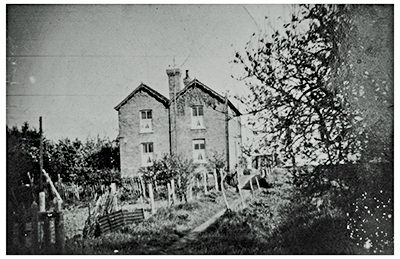
2. Floods around "The Firs" and Conyer Creek
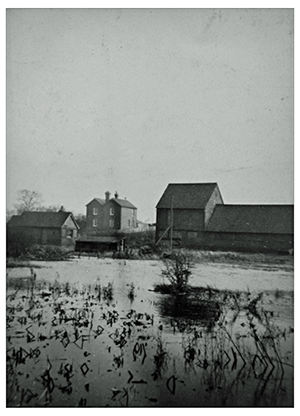 |
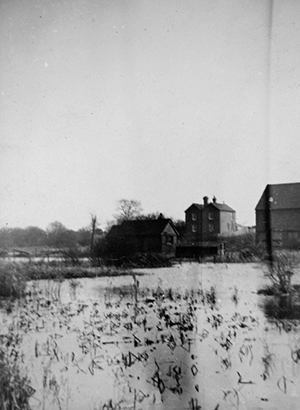 |
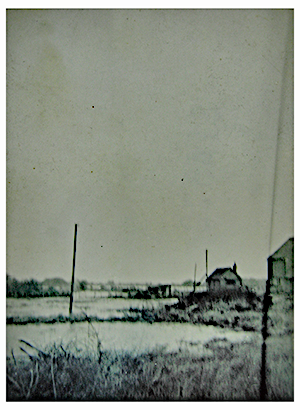 |
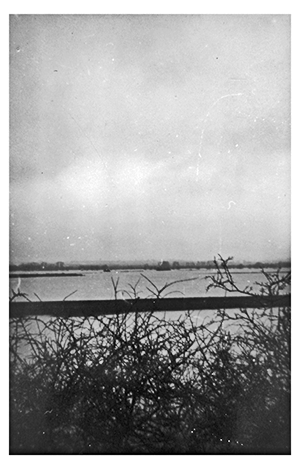 |
The Lynsted with Kingsdown Society is indebted to Cornelius's descendant, Emma Knight, for all her help with information and for kindly agreeing to the use of family photographs.
Draft Family Tree for the TAYLOR FAMILY


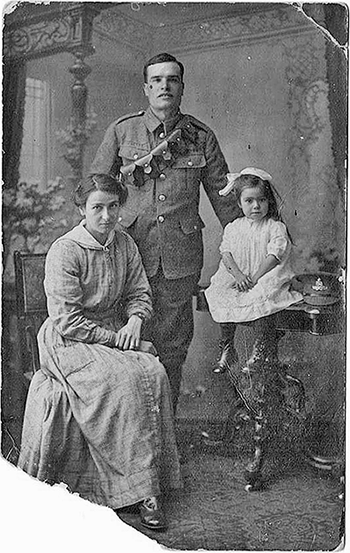 Archibald Augustus Taylor with wife and daughter - AlbertaArchibald Augustus Taylor's surviving military records give his Regimental Number as 177548 in the Royal Garrison Artillery. Ranks held:
Archibald Augustus Taylor with wife and daughter - AlbertaArchibald Augustus Taylor's surviving military records give his Regimental Number as 177548 in the Royal Garrison Artillery. Ranks held: 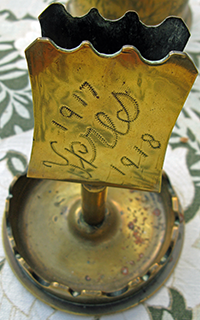
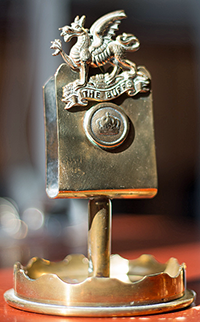

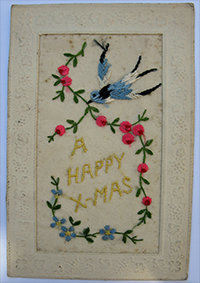
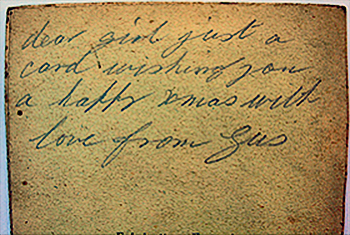
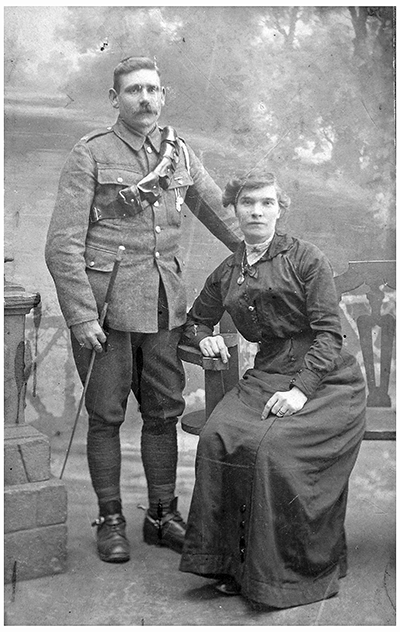
 World War 1 Pages
World War 1 Pages